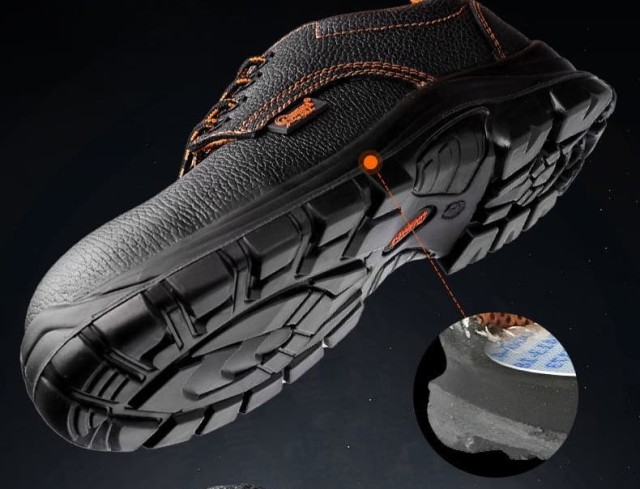Selecting the right safety shoes isn’t just about compliance—it’s about matching footwear features to the specific risks in your work environment. Whether you’re navigating electrical hazards, heavy impacts, slippery floors, or chemical exposure, the wrong choice can compromise both safety and comfort. This guide breaks down the critical features to consider based on your workplace risks, backed by industry standards and real-world applications.
Choosing Safety Shoes for Hazard-Specific Environments
Safety footwear must align with the unique dangers of your job. Research shows that over 60% of workplace foot injuries occur due to inadequate footwear. Here’s how to prioritize features based on your environment:
Electrical Hazard Protection: When and Why It Matters
Electrical hazard (EH)-rated shoes are non-negotiable for electricians, utility workers, or anyone exposed to live circuits. These boots:
- Insulate against shocks with non-conductive soles and composite materials (no steel components).
- Meet ASTM standards, resisting up to 18,000 volts for one minute in dry conditions—sufficient for most industrial electrical risks.
- Prevent circuit completion, critical when working with voltages up to 600V.
Did you know? Composite toe caps are often paired with EH ratings since steel toes can conduct electricity.
Toecap Materials: Composite vs. Steel in High-Impact Scenarios
The choice between steel and composite toecaps hinges on your workplace’s physical demands:
| Feature | Steel Toecaps | Composite Toecaps |
|---|---|---|
| Protection | Superior against crushing | Lighter, resists impacts |
| Weight | Heavier (may cause fatigue) | Up to 30% lighter |
| Best For | Construction, manufacturing | Airports, electrical work |
Pro Tip: For long shifts, composite toes reduce foot fatigue, while steel toes excel in durability for rugged environments.
Slip and Puncture Resistance: Industries with Floor-Based Risks
Slips and punctures account for nearly 25% of workplace foot injuries. Industries like healthcare, food service, and construction need outsoles designed for:
- Slip resistance: Look for deep treads and rubber compounds that grip wet, oily, or icy surfaces.
- Puncture-proof midsoles: Essential for construction sites with nails or sharp debris.
Example: Hospital workers benefit from slip-resistant soles to navigate freshly mopped floors, while warehouse staff need puncture protection from stray pallet nails.
Chemical and Oil Exposure: Advanced Outsole Solutions
For labs, automotive shops, or chemical plants, standard soles can degrade quickly. Prioritize:
- Oil-resistant rubber (e.g., nitrile blends) to maintain traction.
- Chemical-proof uppers like polyurethane to repel corrosive substances.
Note: Shoes rated "S1" or "S2" often include these features, but verify compatibility with specific chemicals.
Balancing Safety and Comfort in Demanding Work Conditions
Safety features mean little if the shoes aren’t wearable for 8+ hours. Key considerations:
- Fit: Safety shoes don’t "break in" like sneakers—poor fit strains feet and alters gait.
- Cushioning: Look for shock-absorbing insoles for roles requiring prolonged standing.
- Breathability: Moisture-wicking liners prevent blisters in hot environments.
Final Thought: The best safety shoe is the one you’ll wear consistently. Test flexibility and weight during fittings.
Ready to Equip Your Team with Hazard-Specific Safety Footwear?
3515 manufactures industry-tailored safety shoes for distributors and bulk buyers, combining compliance with all-day comfort. [Contact us] to discuss custom solutions for your workforce’s unique risks.
Data-driven protection starts from the ground up.
Products You Might Be Looking For:
Explore hazard-specific safety footwear
Related Products
- Wholesale Customizable Suede Safety Boots - Puncture-Proof with Velcro Closure
- Puncture-Resistant Velcro Safety Boots for Wholesale & Custom Manufacturing
- Customizable Anti-Smash Safety Boots for Wholesale & Private Label Manufacturing
- Wholesale Durable Camo Canvas Shoes with High-Traction Rubber Soles
- Durable High-Traction Canvas Sneakers Wholesale & Custom Manufacturing
Related Articles
- Steel Toe Work Boots: Balancing Safety and Comfort for Demanding Jobs
- How to Extend Work Boot Lifespan: Science-Backed Care for Safety & Savings
- How to Choose Work Boots That Match Your Job's Safety Demands
- Matching Men’s Work Shoe Safety Technologies to Workplace Hazards
- How to Choose Work Boots That Match Your Industry's Safety Needs



















